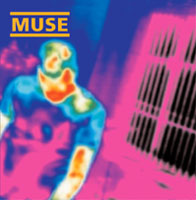Stockholm Syndrome (song)
| Muse song | |
|---|---|
| Name | Stockholm Syndrome |
| Album/single |
|
| Length | 4:58, 4:06 (radio edit) |
| Alternative titles | De-tuned Riff, New D |
| First live performance | 29th August 2003 (full) - 2nd November 2001 (riff) |
| Latest live performance | - |
| Recorded | 2003 |
| Writer/composer | Matthew Bellamy |
| Producer | Rich Costey |
| Chart position | 31 (GB Download) |
<flashmp3>http://www.musewiki.org/images/StockholmSyndrome.mp3%7Crightbg=0xDDEEFF%7Cleftbg=0xDDEEFF%7Cbg=0xFFFFFF</flashmp3>
| Song Nav | ||||
|---|---|---|---|---|
| < | Insert current song | > | ||
Description
While this song was written on piano by Matthew Bellamy, it was recorded on both guitar and synths. Matt then mixed both of the sounds together. The main riff was inspired by System of a Down.[source?] Standard set closer throughout the Absolution tour and sometimes during the Black Holes and Revelations tour. Usually multiple riffs are played after the song. An example of this is the L.A Staples Centre Gig in which more than eight riffs were played after Stockholm Syndrome.
Additional information
The syndrome is named after the Norrmalmstorg robbery of Kreditbanken at Norrmalmstorg, Stockholm in which the bank robbers held bank employees hostage from August 23 to August 28, 1973. In this case, the victims became emotionally attached to, and even defended, their captors after they were freed from their six-day ordeal. The term was coined by the criminologist and psychologist Nils Bejerot, who assisted the police during the robbery, and referred to the syndrome in a news broadcast. The majority of the hostages were okay, but one of them committed suicide and another changed his name to that of one of his captors and disappeared.
The song was added to Guitar Hero 3 on 8th May 2008 along with Supermassive Black Hole and Exo-Politics as part of a Muse track pack.
A cover of this song is featured on the String Quartet Tribute to Muse.
The effect that Matt uses on this song live (which he kicks on after the second chorus) is what's known as 'zero-through flange'; which, incidentally, is the earliest form of flange, back when recording engineers were pinching the actual tape to get the effect. However, zero-through flange is available on very few conventional flanger pedals. Matt achieves this effect by using his TC Electronic G Major (this effect is also available on the TC Electronic Nova Modulator, for those of you who want to replicate the sound at a slightly cheaper price).
Mike Portnoy of Dream Theater covered the intro on his drumming focused ‘‘In Constant Motion‘‘ DVD (watch)
Played backwards
<flashmp3>http://www.musewiki.org/images/Inverted_Stockholm_Syndrome_Refrain.mp3%7Crightbg=0xDDEEFF%7Cleftbg=0xDDEEFF%7Cbg=0xFFFFFF</flashmp3>
When the chorus is played backwards, it sounds something like "You can't see me, we sneak off. I lost to love. Please ... save the night wind and high above, I lost to love. Sing, save". Allegedly.
Lyrics
I won't stand in your way
Let your hatred grow And she'll scream and she'll shout and she'll pray And she had a name, yeah she had a name
I won't hold you back Let your anger rise And we'll fly and we'll fall and we'll burn No one will recall, no one will recall
This is the last time I'll abandon you And this is The last time I'll forget you I wish I could
Look to the stars Let hope burn in your eyes And we'll love and we'll hate and we'll die All to no avail, all to no avail
This is the last time I'll abandon you And this is The last time I'll forget you I wish I could
This is the last time I'll abandon you And this is The last time I'll forget you I wish I could I wish I could
